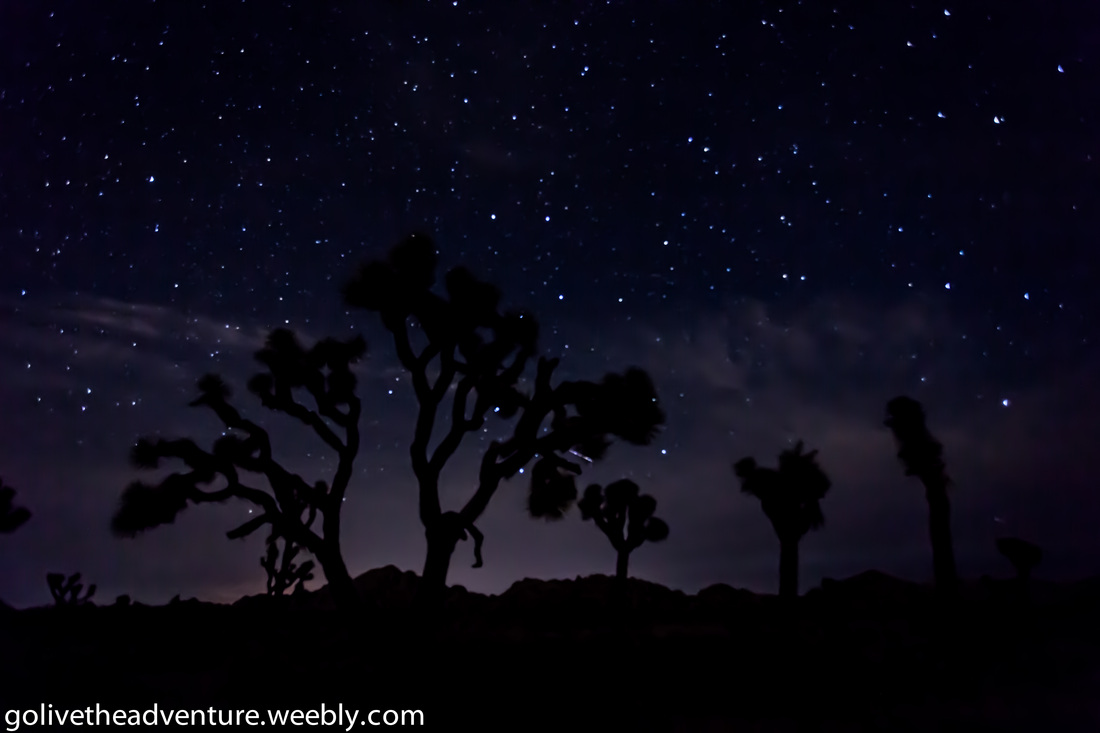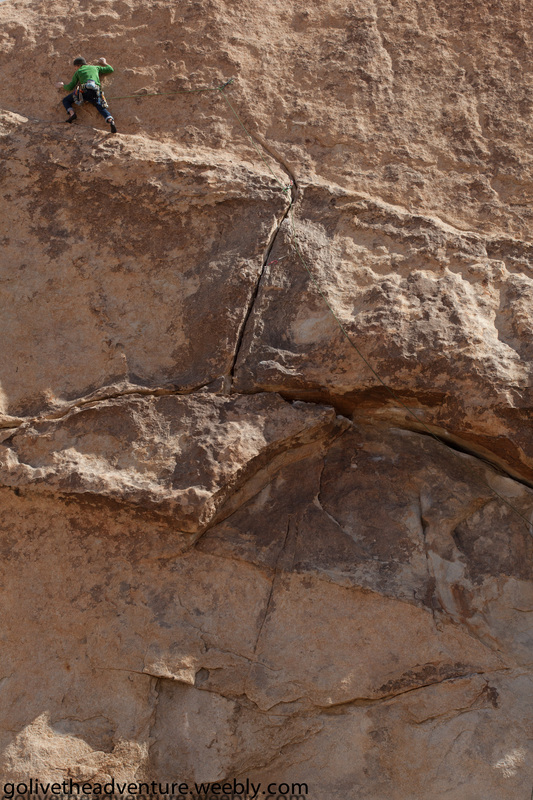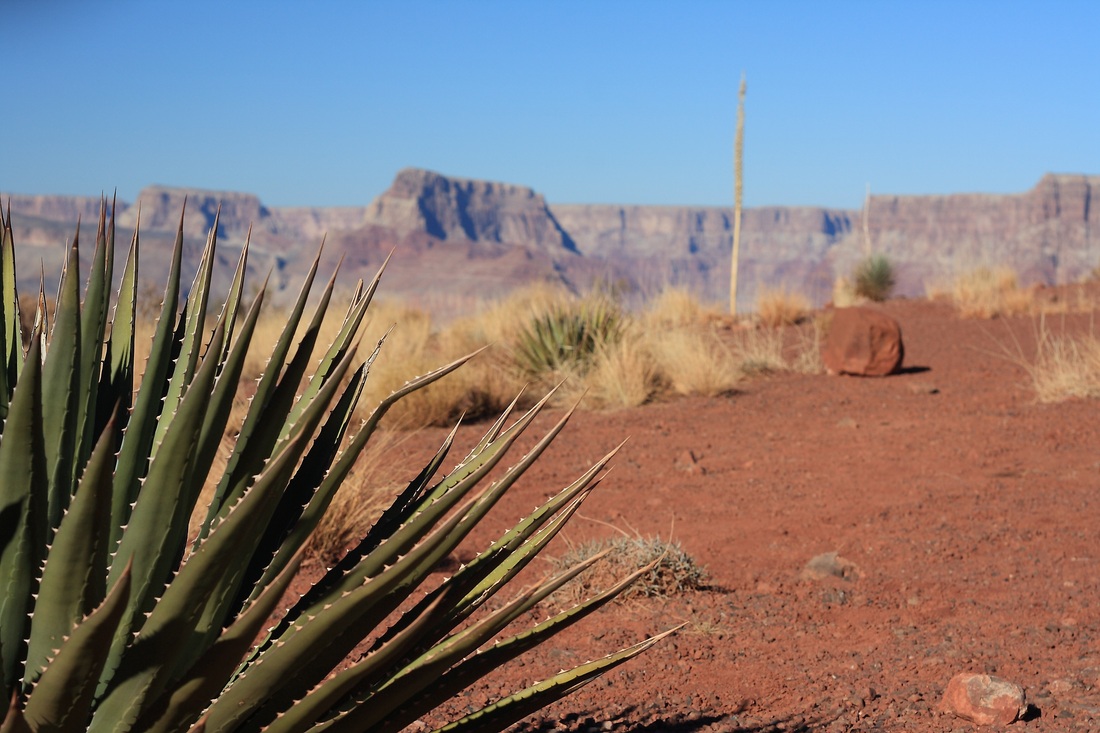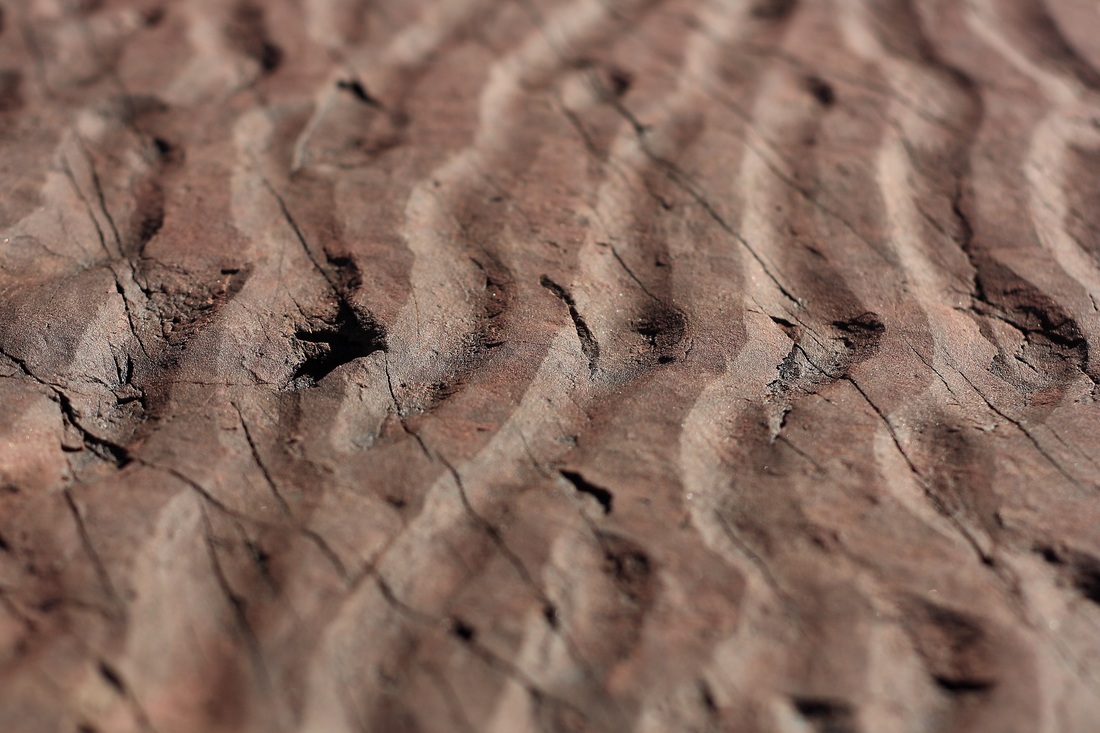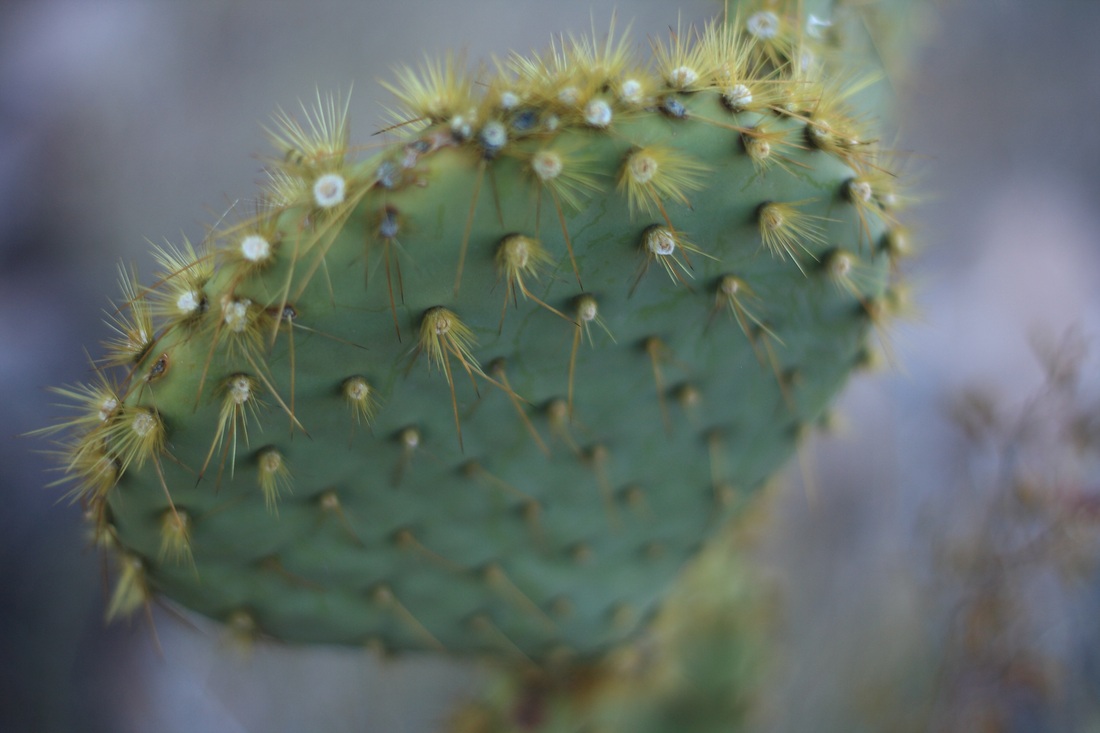|
Garrett and I took, what I will consider a life-changing trip, to Scotland to hike Hadrian's wall, and to explore just a bit of the Scottish Highlands (a place that we certainly plan to head back to in order to do some climbing).
2 Comments
Ever been to Joshua Tree? I hadn't. That was dumb. I spent this past weekend in this paradise-like, outdoor climbing gym. Because all of the main campsites were full, our crew did some backcountry camping which opened up the whole sky for photos - no complaints here! The landscape is totally different from that in Flagstaff - random mounds of rocks rise from the desert landscape instead of canyons that drop into it. The result was that the entire landscape was visible from the tops of climbs, which was an amazing feeling. It was like being in an airplane. At the bottoms of the climbs, an elaborate system of water-carved tunnels and gullies made for a playground that I would have fallen in love with as a little kid. Well, I guess I still kind of am a little kid, as I still fell in love with running around the systems. Pretty awesome, huh? You should go. Invite me when you do :)
"The Canyon giveth, the Canyon taketh away" Just two days after visiting Glen Canyon Dam to watch the beginning of the High Water Flow experiment, Peter, John, Ana, Scott, Jason, Jeff, and I loaded up our weekpacks and started off down the New Hance Trail into the Grandest of Canyons. Google the New Hance trail and I am sure you will get a bunch of rants about how it is the most absurd thing that ever existed, or at least the most absurd thing that is actually called a 'trail'. My own conviction on the matter is that you aren't hiking unless there is a bit of class 4 involved (you are just strolling). Needless to say, I thoroughly enjoyed the decent into Red Canyon, which weaves and winds down through the Kaibab and Toroweap limestones, the Coconino sandstone, the Hermit shale, the Supai supergroup, the Redwall limestone, the Muav limestone, the Bright Angel Shale, and the Tapeats sandstone. The trail ends by Hance Rapid on the Colorado River after culminating in some AMAZING dry-creek hiking through the bottom of Red Canyon (which I accidentally called Hance Canyon in this video). I LOVE boulder-hopping and downclimbing the grand and colorful boulders of that place. While I was there, I ran a few experiments on the local hydrology. With the High Flow Experiment still in operation, the river level was WAY HIGH. Trees, trails, and the famous invasive plant called the Tamarix were all underwater, which made for very interesting hiking (or should I say climbing) the next day, and also forced us up onto a high beach to camp for the night. We ended up in a righteous campsite tucked underneath a maze of twisting tree branches that made for a great kitchen/closet/living room. Immediately upon arriving at camp, Springs basically curled up and started napping. I told him that was a dumb idea because he missed an AWESOME view of the moon coming out. He wasn't much help in the morning either - he pretty much climbed up in a tree and watched me pack and do all the work. As I have alluded to previously, the Canyon was formed by a number of geological processes. The first was the original deposition along the sea floor of sand, mud, and the skeletons of ocean-dwelling invertebrates. Over time, these materials were buried and 'lithified' (turned into rock) under high pressures. The land then rose (it was 'uplifted'), allowing for the development of a river which then downcut through what is now the Grand Canyon. Finally, erosion also occurs on the edges of the Canyon, constantly whittling away at the sides of the giant hole in the ground. The result is a number of interesting rock types and structures. You may see the 700 million year old ripple marks now frozen in time. Shale layers may flake off one at a time, each representing a number of years beyond the human ability to comprehend. Sandstones may show interesting layers also, which could be a clue as to a different environment at the time of deposition - though bends and curves in these layers may have formed while the sand was being lithified, far under the ground and under high pressures and temperatures. It is the challenging job of scientists to interpret all of these clues as to what the past was like, and they use a stunning number of ingenious techniques to understand and interpret the different processes that make these rocks into what we see today. Rocks aren't the only interesting science to be found in the Canyon. The harsh desert environment makes living a struggle for any type of life, and the adaptations that plants and animals make in order to adapt and thrive are nothing short of astonishing. Some of my favorite plants are the cacti, which in order to adapt to the lack of water have lost true leaves, which are a characteristic trait of many plant species throughout the world. Instead, the cactus retains only spines, which serve many purposes including water retention. To me, the most amazing trait of cacti in the Grand Canyon is the massive diversity of the plants - there are all different types in different locations; if Darwin would have visited this place he would have never had to wait to publish his theories! It would have been just too obvious. On Thanksgiving Day we made our way across Papago Creek, which is certainly another one of my happy places. I took the time to drop my pack and explore the creek for a while. At the mouth of the dry creek, there was another canyon slide that was too intense for me to do, because in the world's biggest playground it's a long way from help if you are stupid and hurt yourself. Again, the Canyon givith (to those who are respectful), and the Canyon taketh away (from those who aren't). I climbed back out of the creek and walked around to get a good feel of just how big it was from the front also. It was a very nice drop. After Papago Creek comes a bit of a traverse across cliffs above the river, followed by a hike up the beginning of 75-mile canyon. The high canyon walls make the place feel like home. The exit out of the canyon includes a great bit of full-pack, low-grade 5th class climbing. Super fun. On Thanksgiving night, we enjoyed another great moon. Oh yeah, and a TON of Thanksgiving food - turkey, stuffing with butter, green beans, cranberries, and even pumpkin pie, whipped cream, and eggnog! We cooked it over good old homemade alcohol stoves made from old beer cans, of course. A few Grand Canyon hikers happened to be at the same beach as us, so we invited them down for the festivities. One father was hiking with his middle school aged daughter, so they were especially timid to come down and celebrate the holiday with a bunch of eggnog- and bourbon-drinking crazy hikers. But, the smell of pumpkin pie rapidly melted their timidness, and all of us agreed we had never seen such a happy 14-year-old after she had 3 pieces of pie. Later on I played with taking some night pictures in my eggnog-induced stupor. We awoke, feeling fresh and ready to go... kind of. :) We hiked to Cardenas Beach, where we camped for the night. Throughout the time we were there, water levels were still dropping, and by the morning we were able to see some really impressive results of the HFE - beaches had built up to impressive levels. We started our ascent to the top of the Redwall along the Tanner Trail, being constantly rewarded with great vistas and cool views of century plants. As always, when it came time to leave, we just weren't ready to go. Though we had dreamed all week about the steaks and ice cream that we would eat at the end of the trip, they just didn't seem that appetizing anymore. Nonetheless, we packed our bags, hacked, and hiked out of the Grand Canyon. That's it for now, folks. Until next time, happy journeys.
Felipe and I joined Peter and Ana on a day-hike down the Tanner Trail last Saturday. We carried down eight and a half gallons of water, 18 beers, and a bottle of bourbon to stash a cache for our upcoming Thanksgiving hike. Oh give us a break - like you won't indulge yourself over Thanksgiving weekend! The white, puffy clouds warned of rain and dotted the landscape with shadows, but we never felt more than a few drops hit our skin and the shadowed landscape highlighted the beauty of the natural colors of the Canyon. I am trying to learn a bit more about photography and taking cool pictures. Today, I posed a challenge to myself... take all my pictures in black and white. The Canyon is a good place to do this because of the texture of the landscape... folds and cracks in the rocks and gnarled junipers can stand out even more in black and white than in color. So, my challenge was essentially to find texture in the landscape that out-shaded the brilliantly rusty colors of the Canyon and the clear blue of the Colorado River and the sky. The photography challenge was fun, but I mean it when I say you should have seen it in color. (A continuation from Panama, Part I) The last night we were to spend on the Kuna Yala Islands proved to be quite enjoyable and eventful. A young Kuna who was planning on soon heading to the mainland to attend college lead us around the thin, dirt alleyways of Carti. After the lone authority on the island, a scowling military policeman, tracked us down to check our passports, we got a full tour of the island in about a half hour. We passed the school, the hospital, the church, and many a hammock-strewn front porch. We ended in a large common space inhabited by about 10 young Kuna men who were having a grand old time with several packs of Balboa, one of Panama's prided beers. They welcomed us in - overwhelmed to have visitors to entertain - and supplied us with Balboas. Before we knew it, they were teaching us Kuna, and we were teaching them English, all through the common language of Spanish. It was pretty darn cool. By the end of the night, we were making jokes and laughing like crazy, which was when I really felt like my Spanish was on-point. It felt good. The next morning we woke up on the islands in the Atlantic Ocean, planning to be on the Pacific Coast once again in just a few hours. We had our traditional Kuna breakfast - Kuna bread was served accompanied with peanut butter and nutella. We had a bit of a treat though - leftover lobster from last night, and eggs. You know I was all over that. We boarded the boat for the last time and headed to the mainland, where we hired a driver from Panama City to take us back to la Ciudad. He proceeded to step on it and drive back up over the steep mountains in his old, manual transmission Land Rover at 110 km/h while texting and passing other vehicles on the skinny, twisty dirt road. I tried to ignore the my gut reaction, which was telling me to either scream or throw up, and instead to enjoy the total beauty of the landscape. After cresting the last ridge among the peaks, we could see the City through the blue of the horizon. We made it back to Panama City, found a supermercado, stocked up on some supplies, and while some of the group sat down to eat, Mikey and I went off to find out if we could catch a bus west. We spoke with a man in a ticket booth in the main bus station, and all of a sudden we were being rushed off to a bus - the crew that was eating chasing after Mikey and me lest we get split apart in a place where we had no access to cell phones and a general sense of direction. Our bags were thrown atop the roof of a nice looking white minivan/bus. After travelling on the Diablos Rojos, we were excited to have a respectable bus to travel on to our next destination. Then, the doors opened.... People almost spilled out of the bus due to overcrowding. Nonetheless, we were ushered onto the bus, squeezing in between the seats and next to the driver, and off we went. Little did we know that this experience would parallel our experiences throughout the rest of Panama, and that Panama has a bus system that FAR, FAR exceeds the utility and ease of the U.S. bus systems. Almost literally the entire country can be accessed via bus in a reasonable amount of time (it helps that the country is only about the size of South Carolina). All one needs to do to get to the next town is to stop on a roadside, and a bus will stop (no matter where you are) within a few minutes to pick you up. If the bus is not going where you desire, they will give you instructions for which bus to catch to get there. The man who had thrown our bags on top of the bus was the bus helper - one of them rode on every bus and collected the money so that the driver did not have to worry about it. It makes the system very easy, and bus fares were usually in the range of a few quarters. We crossed La Puenta de las Americas and after about an hour of driving, the driver told us we were at Campana. There was a slight misunderstanding, as we had wanted to go to Altos de Campana - a not-so-popular mountainous national park - instead of to the town of Campana. I don't think a whole bunch of people understood that we actually wanted to go to some of the highest, most remote spots in the country for enjoyment. Anyway, we determined that we were "only 15 km" from Altos de Campana (a distance that Mikey seems to think is like a stroll in the park, probably since she can cover the entire thing at a 6 minute mile pace without blinking an eye). So - what did we do? Started hiking along the Interamericana - the highway that runs from Panama City to Mexico and is actually a part of the larger Pan-American highway, which runs from Prudhoe Bay, AK (another place that I have been!) to Ushuaia, Argentina. We were honked at the ENTIRE time as we hiked - we came to find out that this was simply what Panamanians do to say "Hey, do you want a ride?" Eventually, we reached our turnoff and started up a WICKEDLY steep ascent! I mean, damn! I think even Mikey broke a sweat! (did I mention Panama is hot in the summer? Like... REALLY hot) Luckily, a few minutes later, we were being honked at... a bus was headed up to Altos de Campana! They picked us up, gratis, and we climbed and climbed up a twisting road through what I can only describe as 'The Land Before Time.' We arrived at the ANAM Ranger Station, where the main park ranger and his intern sidekick gave us directions to a good campsite. We hiked up the road for a bit and turned off onto a red clay path, only to be caught by the intern. He seemed to think we would get lost, so he had come to lead us to the site. Indeed, we would have gotten lost, as the path was not as simple as they had made it seem, and it was growing darker by the minute. We eventually made it to our campsite, thanked the intern for catching us, and started to set up camp and strip off our clothes that were totally soaked in sweat in favor of something drier that we could sleep in. (little did we know that we would be sweating profusely even while sleeping in the Panama heat. We made a meal ... the first of many of it's kind. White rice, lentils, cans of tuna, and chocolate. mmmmm In the morning, we got up, determined to hike long distances. And hike we did. We followed an intense clay jungle trail up and up until we reached the top of some peak from which we could see.... well... nothing but jungle. We were still covered by the thick trees and leaves. There were a heck of a lot of interesting and cool plants to check out, though.  After hiking for most of the day and not finding the trail that we hoped would take us from the park to another town - El Valle de Anton - in 3 or 4 days of good hiking, we decided to just try to take a bus to the little mountain town. We hiked the road back into a tiny town called Chico, on the way finding a few good vistas that we could actually get a view from. We chatted with an old lady who owned and worked at a cafe until the bus came by and picked us up, and like a whirlwind we were off again. Just ask my parents, I was a weird kid. Especially when it came to hiking. While all of my buddies wanted to go climb to the top of the biggest mountain they could find, all I ever wanted to do was hike the little stream drainage system next to the mountain. It started in Houston - Buffalo Bayou made the perfect nursing grounds to cultivate my love of streams. I would walk down to the end of our street, and hike along the trails and muddy channels of that glorious bayou system. Then it continued in Virginia. I remember at a fairly young age finding the USGS 7.5-minute topo map of the quadrant in which our house was located. What did I look for? The lowest points on that map. I found every stream within biking distance from our house and was determined to boulder-hop my way all the way to the Potomac on that stream. Once, I went on a solo hike on Christmas Day down 'Bull Run' near our house. Bull Run was one of the more difficult stream hikes I had encountered because it turned into a fairly narrow canyon with deep pools that I had never made it past. I hiked it that December 25th all the way to the Potomac with the help of some new waterproof pants I had gotten as a gift that morning. More recently, while living in Alaska and hiking in the Gates of the Arctic, people who hiked with me would commonly get annoyed. I would ascend quickly, leaving hiking companions behind in the dust, and then after summiting and descending, they would find me dragging behind on the way back to the car... slowly meandering back and forth over the boulders of the cool Arctic streams, enjoying myself and the moment. I tell you this to tell you that I may have found my outdoor calling out here in the canyons of the west. Canyoneering is an entire sport devoted to exploring western streams and the canyons they carve - beautiful remnants of flash floods past. Last weekend, Ky, Kate, Angela, and I explored the West Fort of Oak Creek Canyon. This canyon drops off the Mogollon Rim from just outside of Flagstaff and ends in Sedona's famous Oak Creek (the same one referenced many of my posts starting with riding across the country and cliff jumping into the Oak Creek in Sedona - one of the reasons I came back here!). Of course, starting in Flagstaff, we were surrounded by white-shaded Kaibab Limestone and Coconino Sandstone walls. The Flagstaff climate also allows for more trees than does the Sedona landscape on the bottom of the Mogollon Rim, further down in the desert. The fall is upon us here in Flagstaff and the colors are beautiful! Canyoneering is an interesting sport, in that it requires a lot of technical knowledge, and a lot of just plain stupidness. Many of the canyons will have waterfall sections or areas that become very narrow and have tall, smooth walls rising up around them and trapping pools of water. Waterfall areas commonly need to be rappelled, which means a lot of good anchor-building skills and ropework are required; pools require wading and often times swimming through bone-chilling waters. This particular canyon was very mild and did not require any rappels... but it did require a LOT of wading. And a couple of those bone-chilling swims that I mentioned... luckily I came prepared (well, not with a wetsuit like the ladies... but I had my methods) As the canyon continued to drop off the rim, we made our way down into rich red Schnebly Hill Sandstone, still wading like crazy. We made our way through various 'subways' - areas of sandstone that have been carved out in a tunnel-like shape by flash floods rushing through. And passed by some of Sedona's characteristic rock-temples. I had so much fun in the process of it all that somewhere in-between stripping down for swims and clothing back up for hiking and warming up, I lost my pants. Well, I guess that was pretty dumb. But I will stick to this story: I had so much fun on my first canyoneering trip that I lost my pants.
|
Authormarshall moose moore is a meandering biogeochemist (a type of environmental scientist who studies elemental cycles) who is always on the lookout for good stories. The blog is a place to tell some of those fun stories. Check out The Course or The Brave Monkeys Speak Podcast for lessons and actionable goals to apply to YOUR life. The Life-Adventurer's Manifesto:
Categories
All
Popular Pages:
|

|
|


